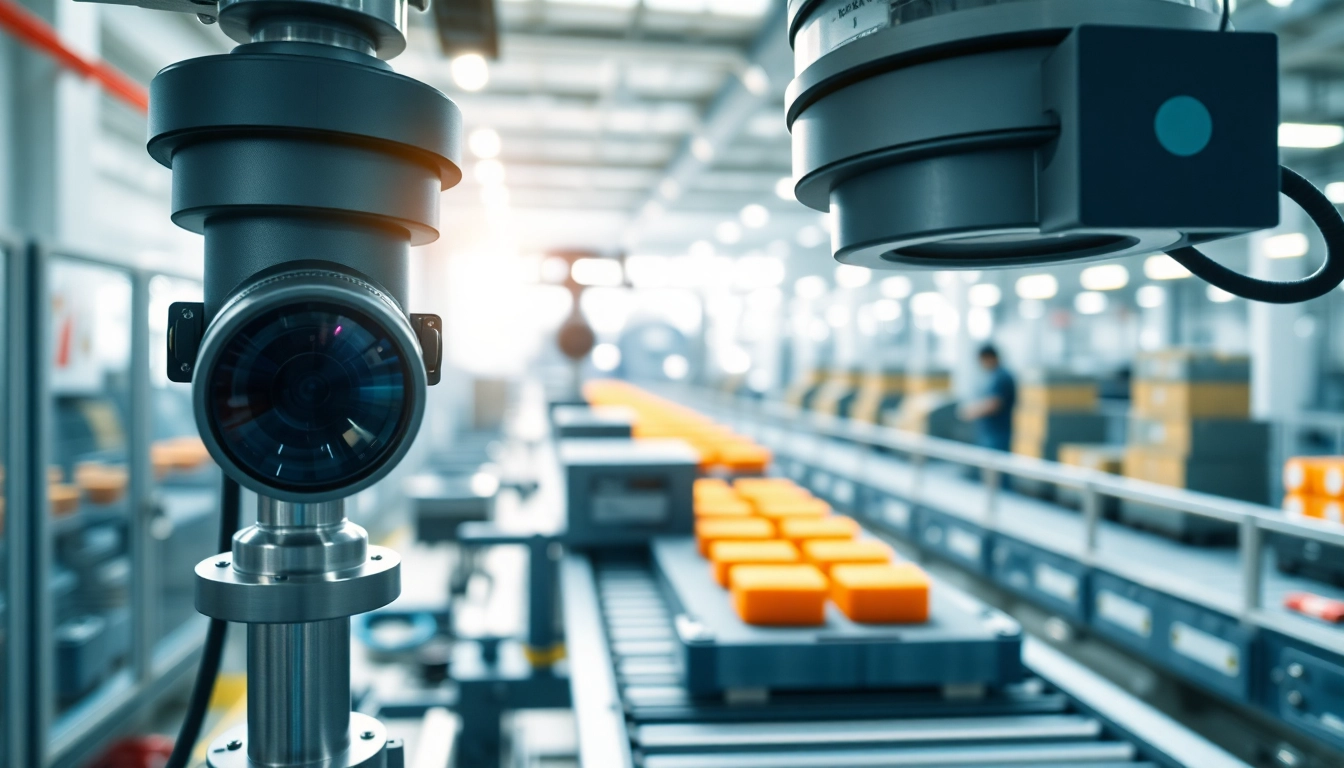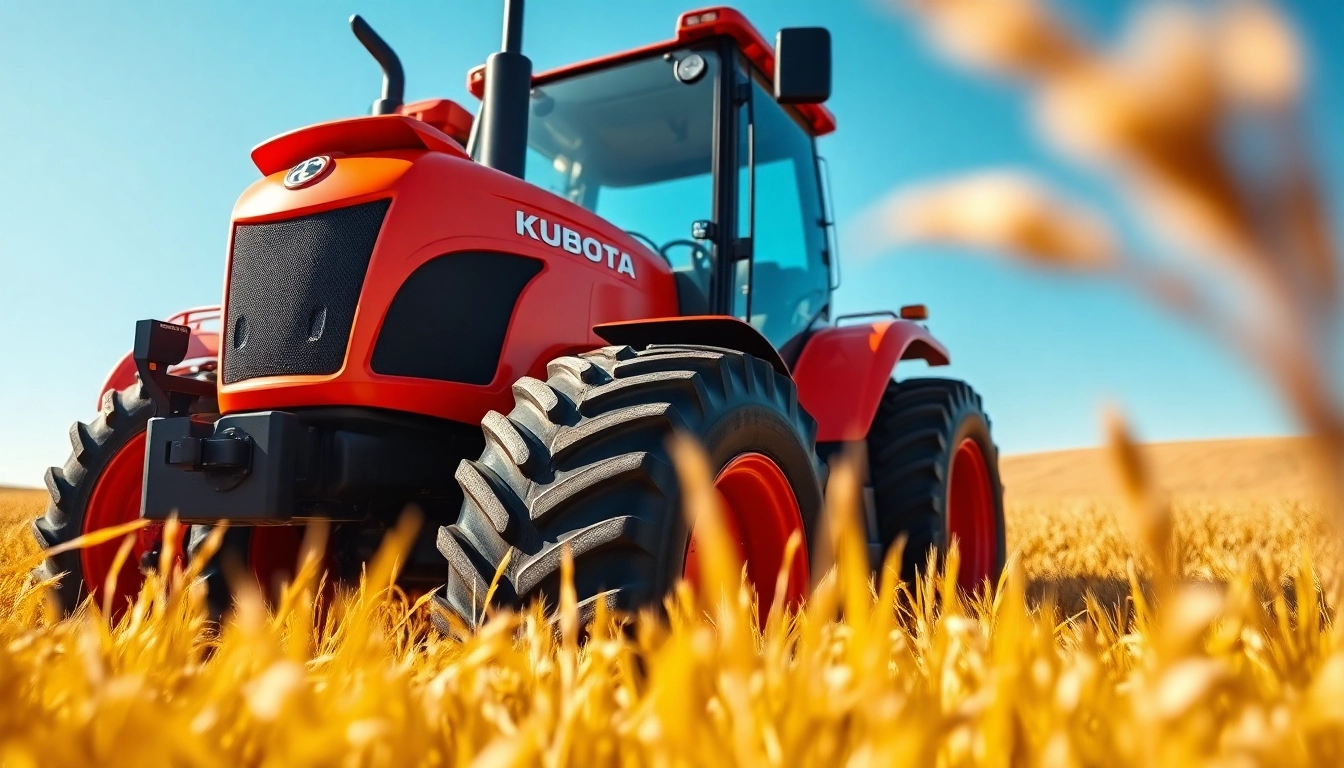Understanding Machine Vision: Applications, Benefits, and Future Trends
What is Machine Vision?
Definition and Overview of Machine Vision
Machine vision refers to the technology and methodologies used to provide imaging-based automatic inspection, analysis, and control in various applications. Essentially, it enables machines and computers to interpret visual information, replicating human visual capabilities but with greater precision and speed. Systems of machine vision typically utilize cameras, image processing algorithms, and artificial intelligence to analyze and respond to visual data. In the modern industrial world, machine vision is transforming processes across sectors, enabling automation and improving efficiency.
Key Components of Machine Vision Systems
Machine vision systems comprise several crucial components that work together to achieve seamless functionality. Understanding these components helps in appreciating how machine vision integrates into wider manufacturing and technological contexts.
- Cameras: The eyes of the machine vision system, capturing images in various formats such as 1D, 2D, and 3D. Different types of cameras, including CCD (Charge-Coupled Device) and CMOS (Complementary Metal-Oxide-Semiconductor), are used based on application needs.
- Illumination: Proper lighting techniques ensure that images are captured clearly, allowing the system to detect features effectively. This may involve LED lighting, lasers, or other forms suited to specific conditions.
- Image Processing Software: This software analyzes the captured images, employing algorithms to translate visual data into actionable information. The software varies from simple pixel-based systems to more complex AI-driven solutions.
- Hardware: Processing hardware, typically including CPUs and GPUs, supports the software in fast computing tasks necessary for real-time analysis.
- Communication Interfaces: These allow collected data to be transferred to other systems for integration, visualization, and decision-making.
How Machine Vision Works
The working principle of machine vision begins with image acquisition, where a camera captures visual data from the environment. The image is then enhanced using specific illumination techniques to ensure clarity. After obtaining the image, the processing software applies algorithms to identify and extract relevant features or anomalies within the image. Finally, the system makes decisions or triggers actions based on predefined criteria, such as quality control checks or operational guidance.
Applications of Machine Vision Across Industries
Machine Vision in Manufacturing and Quality Control
In manufacturing, machine vision plays a pivotal role in automating quality control processes. Systems can inspect products at remarkable speeds and accuracy levels, allowing for the detection of defects before products reach consumers. For instance, in semiconductor manufacturing, machine vision is used to identify microscopic defects that would be impossible for human inspectors to detect, ensuring that only the highest quality circuit boards are produced.
Machine Vision Applications in Healthcare
Healthcare leverages machine vision technology for tasks like automated image analysis in radiology, pathology, and diagnostics. High-resolution imaging systems, supported by machine learning algorithms, analyze scans and images to detect abnormalities, such as tumors or fractures, with speed and accuracy exceeding traditional methods. Furthermore, robotic surgeries increasingly rely on machine vision to provide real-time feedback and enhance precision in surgical procedures.
Use Cases in Agricultural Technology
In agriculture, machine vision systems monitor crop health, guiding decisions on irrigation, pest control, and harvesting. Utilizing aerial imagery captured by drones, farmers can analyze the health of crops across vast areas. Machine vision also facilitates precision agriculture by helping farmers automate tasks like weed detection and yield estimation, thus optimizing resource allocation and improving overall productivity.
Benefits of Implementing Machine Vision Technology
Enhancing Product Quality and Consistency
Implementing machine vision technology significantly enhances product quality and consistency. By automating inspection processes, machine vision reduces human error, leading to fewer defects and a more reliable end product. Moreover, real-time data reporting helps manufacturers identify trends and variances that may require attention, thereby proactively addressing potential quality issues.
Reducing Costs and Increasing Efficiency
The introduction of machine vision can lead to substantial cost reductions and increased efficiency in operations. By automating visual inspections and analyses that were once performed manually, organizations can reduce labor costs and reallocate human resources to higher-value tasks. Additionally, improved throughput and lower defect rates directly contribute to enhanced operational efficiency.
Real-time Data and Decision Making
Machine vision systems provide real-time data analytics, allowing for quicker decision-making across operations. Accessible visual data enables companies to respond to production changes instantaneously, optimizing production schedules and improving inventory management. When combined with enterprise resource planning (ERP) systems, machine vision can facilitate a seamless flow of information across all levels of the organization.
Comparing Machine Vision and Computer Vision
Core Differences Between Machine Vision and Computer Vision
While often used interchangeably, machine vision and computer vision have distinct differences in focus and application. Machine vision is primarily concerned with automating specific industrial tasks such as inspection, measurement, and guidance, relying heavily on pre-defined conditions, leading to accuracy in repetitive processes. In contrast, computer vision is broader, encompassing the interpretation and understanding of visual data, often involving machine learning techniques to recognize patterns and objects across diverse contexts.
Applications Where Each Technology Excels
Machine vision excels in controlled environments like manufacturing and assembly lines, where tasks are repetitive and the accuracy of inspections is critical. Conversely, computer vision finds its strength in applications that require adaptability and learning from environmental changes, such as autonomous driving, facial recognition, or medical imaging diagnostics.
Understanding the Intersection of Both Fields
The intersection of machine vision and computer vision is increasingly notable as technological advancements simplify integration. For instance, machine learning algorithms typically used in computer vision are empowering machine vision systems to learn from patterns in defects and improve over time, enhancing utility across varied industrial applications. Understanding this synergy can significantly enhance the efficiency and effectiveness of vision systems.
The Future of Machine Vision Technology
Emerging Trends and Innovations
As technology evolves, new trends in machine vision are emerging, including the integration of AI and deep learning, which promise to amplify capabilities and reliability. For example, deep learning models are becoming adept at identifying complex patterns and anomalies in visual data, significantly improving the efficacy of automated inspection processes across industry.
Impact of AI and Machine Learning on Machine Vision
The infusion of artificial intelligence (AI) and machine learning into machine vision systems is poised to revolutionize the field. Machine learning algorithms can continuously learn and adapt from new data, allowing vision systems to recognize various products, detect flaws, and provide feedback on quality in real time—enhancing the ability of industries to maintain high standards.
Preparing for Future Challenges in Vision Technology
As machine vision continues to grow, organizations will face challenges such as data privacy concerns, the need for substantial data inputs, and the requirement for new skill sets in staff for effective deployment. Addressing these challenges will necessitate the adoption of best practices in data management, ethical AI application, and ongoing training for personnel engaged in operating machine vision systems. Ensuring a capable workforce will be essential as machine vision technology becomes more integrated into process operations worldwide.














Post Comment